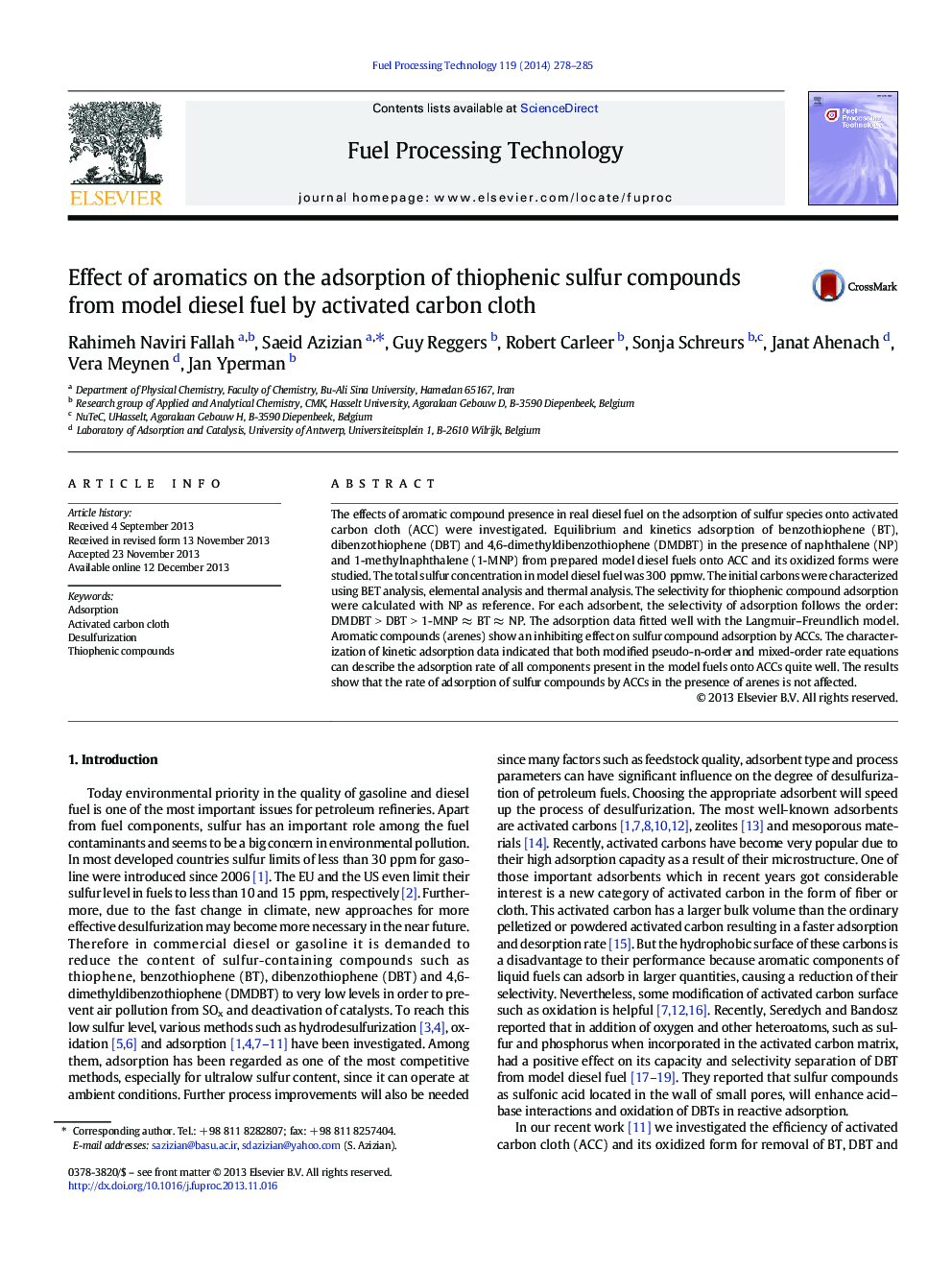| Article ID | Journal | Published Year | Pages | File Type |
|---|---|---|---|---|
| 209906 | Fuel Processing Technology | 2014 | 8 Pages |
•Selectivity of adsorption follows the order: DMDBT > DBT > 1-MNP ≈ BT ≈ NP.•The higher adsorption selectivity for DMDBT was due to its higher basic character.•The presence of aromatics decreases equilibrium adsorption, and does not affect rate.
The effects of aromatic compound presence in real diesel fuel on the adsorption of sulfur species onto activated carbon cloth (ACC) were investigated. Equilibrium and kinetics adsorption of benzothiophene (BT), dibenzothiophene (DBT) and 4,6-dimethyldibenzothiophene (DMDBT) in the presence of naphthalene (NP) and 1-methylnaphthalene (1-MNP) from prepared model diesel fuels onto ACC and its oxidized forms were studied. The total sulfur concentration in model diesel fuel was 300 ppmw. The initial carbons were characterized using BET analysis, elemental analysis and thermal analysis. The selectivity for thiophenic compound adsorption were calculated with NP as reference. For each adsorbent, the selectivity of adsorption follows the order: DMDBT > DBT > 1-MNP ≈ BT ≈ NP. The adsorption data fitted well with the Langmuir–Freundlich model. Aromatic compounds (arenes) show an inhibiting effect on sulfur compound adsorption by ACCs. The characterization of kinetic adsorption data indicated that both modified pseudo-n-order and mixed-order rate equations can describe the adsorption rate of all components present in the model fuels onto ACCs quite well. The results show that the rate of adsorption of sulfur compounds by ACCs in the presence of arenes is not affected.
Graphical abstractFigure optionsDownload full-size imageDownload as PowerPoint slide
